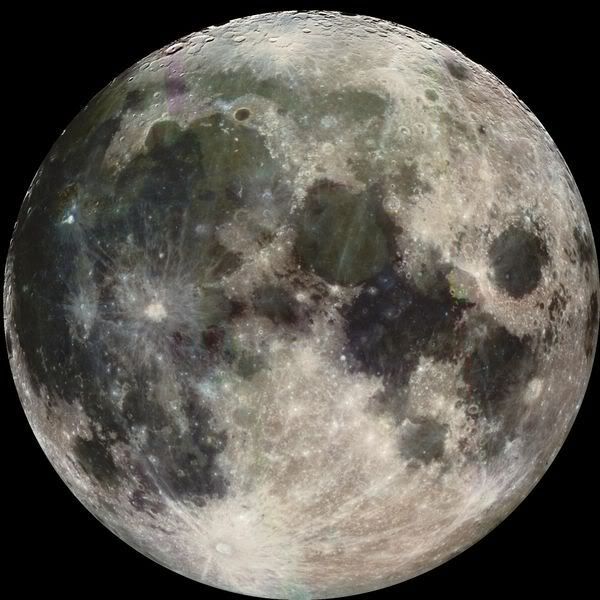Full moon

Composite image of the Moon as taken by the Galileo spacecraft on 7 December 1992. The color is 'enhanced' in the sense that the CCD camera is sensitive to near infrared wavelengths of light beyond human vision.
The phases of the Moon have been given the following names, which are listed in sequential order:
Dark Moon - Not visible
New Moon - Not visible, or traditionally, the first visible cresent of the Moon
Waxing Crescent Moon - Right 1-49% visible
First Quarter Moon - Right 50% visible
Waxing gibbous Moon - Right 51-99% visible
Full Moon - Fully visible
Waning gibbous Moon - Left 51-99% visible
Third Quarter Moon - Left 50% visible
Waning Crescent Moon - Left 1-49% visible
New Moon - Not visible
is a lunar phases that occurs when the Moon is on the opposite side of the Earth from the Sun, and when the three celestial bodies are aligned as close as possible to straight line. At this time, as seen by viewers on Earth, the hemisphere of the Moon that is facing the Earth (the near side) is fully illuminated by the Sun and appears round. Only during a full moon is the opposite hemisphere of the Moon, which is not visible from Earth (the far side), completely unilluminated.

Animation of the Moon as it cycles through its phases. The apparent wobbling of the Moon is known as libration.

Composite image of the Moon as taken by the Galileo spacecraft on 7 December 1992. The color is 'enhanced' in the sense that the CCD camera is sensitive to near infrared wavelengths of light beyond human vision.
The phases of the Moon have been given the following names, which are listed in sequential order:
Dark Moon - Not visible
New Moon - Not visible, or traditionally, the first visible cresent of the Moon
Waxing Crescent Moon - Right 1-49% visible
First Quarter Moon - Right 50% visible
Waxing gibbous Moon - Right 51-99% visible
Full Moon - Fully visible
Waning gibbous Moon - Left 51-99% visible
Third Quarter Moon - Left 50% visible
Waning Crescent Moon - Left 1-49% visible
New Moon - Not visible
April 2nd :
Egg Moon
Pink Moon
Sprouting Grass Moon
Fish Moon
Seed Moon
Waking Moon
Egg Moon
Pink Moon
Sprouting Grass Moon
Fish Moon
Seed Moon
Waking Moon



No comments:
Post a Comment